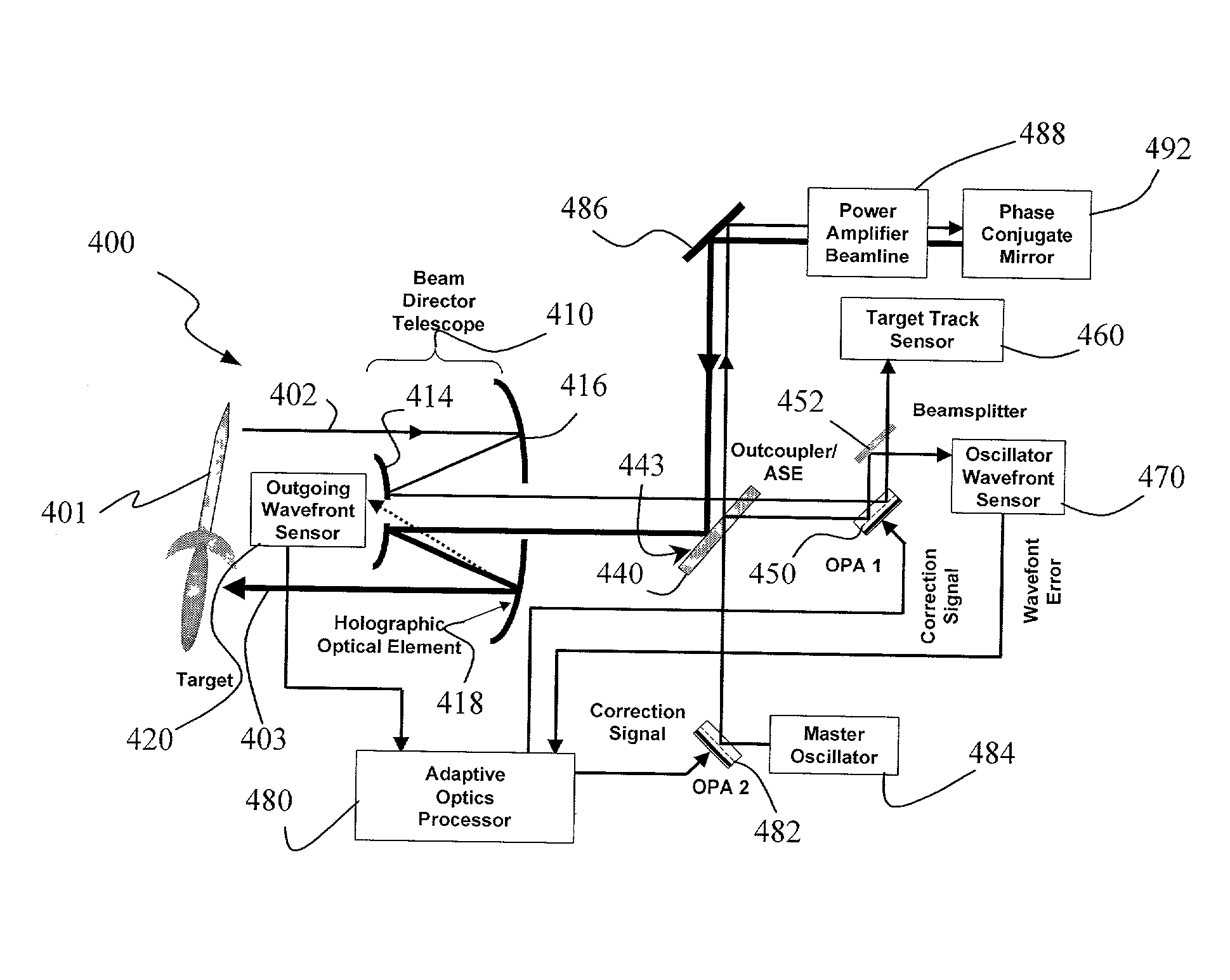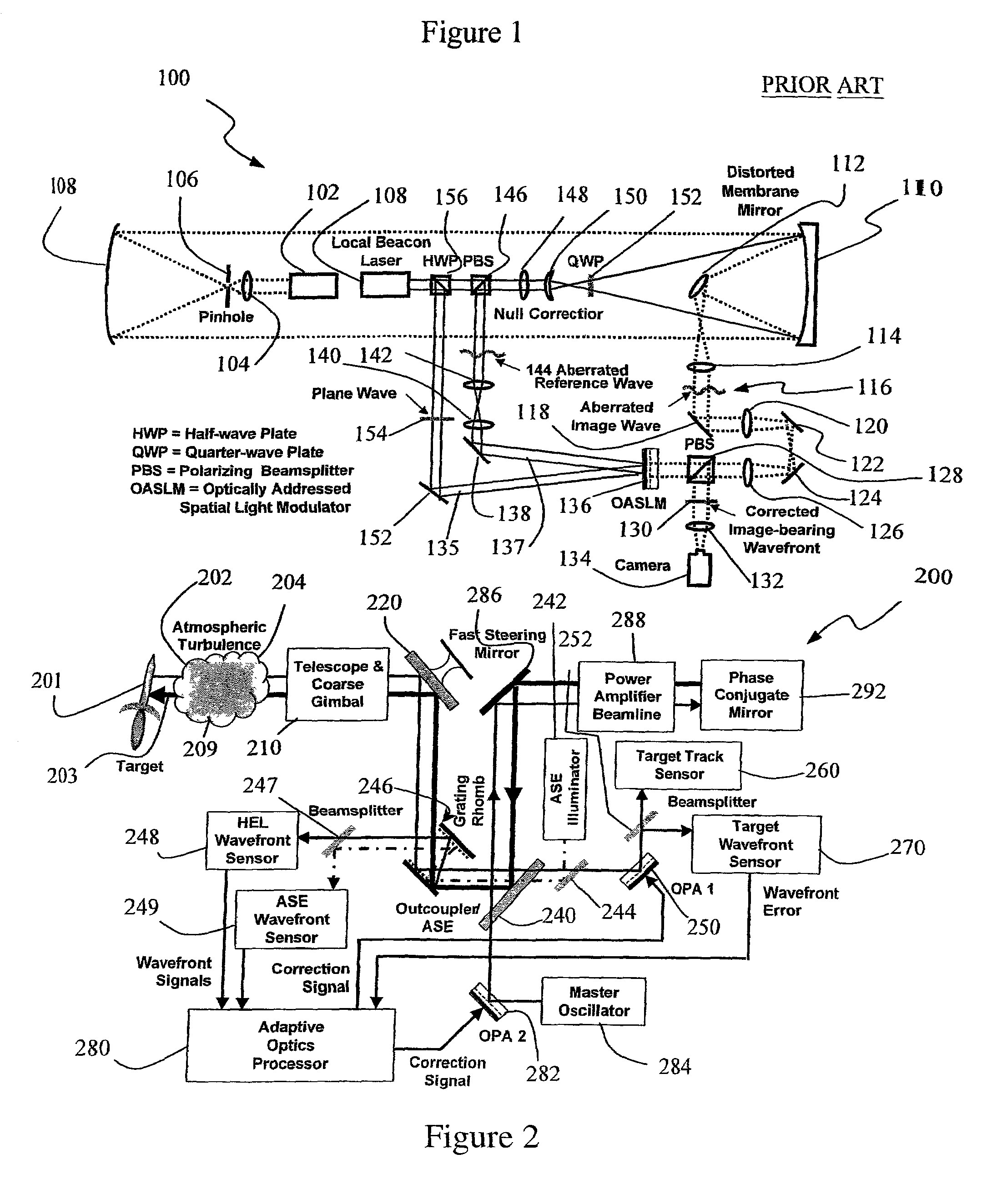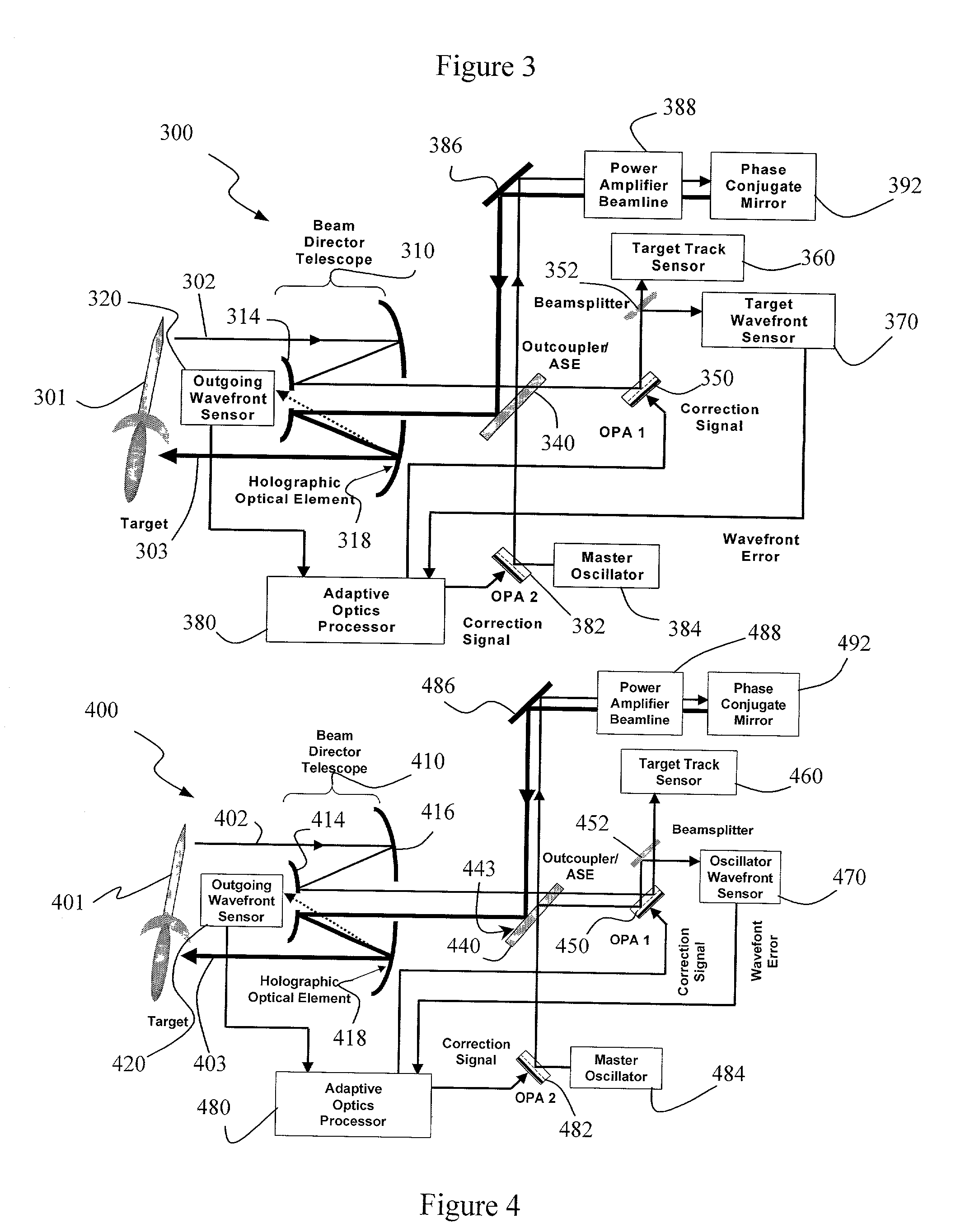System and method for effecting high-power beam control with outgoing wavefront correction utilizing holographic sampling at primary mirror, phase conjugation, and adaptive optics in low power beam path
a technology of adaptive optics and beam path, applied in the field of optics, can solve the problems of reducing durability and/or increasing manufacturing cost, limiting the performance of conventional adaptive optics systems using deformable mirrors, and delicate optical devices in the path of high-power energy beams
- Summary
- Abstract
- Description
- Claims
- Application Information
AI Technical Summary
Problems solved by technology
Method used
Image
Examples
embodiment 100
[0029] The system shown in FIG. 1 is representative of the work done by Gruneisen, Peters, and Wilkes and others in this field. In this embodiment 100, an optical aberration is recorded on an Optically Addressed Spatial Light Modulator (OASLM) 136 with a pair of laser beams. One beam 135 has a plane wave phase profile and serves as the "reference" beam. The other 137 has a phasefront on which is encoded the aberration 144 of the distorting element to be corrected. These beams are caused to interfere at the OASLM 136 and the resulting dark and light interference fringes are detected by a photo-sensitive layer (photo-conductor or photodiode) within the OASLM 136, which converts the optical fringes into an electric field profile. In holography, this is known as the "read" process. The spatially varying electric field then "writes" the interference pattern onto a nematic or ferroelectric liquid crystal layer, which responds to the varying field profile by reorienting the direction of th...
embodiment 500
[0045] FIG. 5 shows a preferred embodiment of the invention. In FIG. 5, non-common path error correction is accomplished with a second phase conjugate leg, thereby eliminating the Oscillator Wavefront Sensor, OPA 2, and a portion of the functionality of the Adaptive Optics Processor, utilized in FIGS. 3 and 4. In this embodiment, the Master Oscillator 552 is moved to the Oscillator Wavefront Sensor 470 location in FIG. 4; and both OPA 2 (482) and the Master Oscillator 484 thereof are replaced by a second Phase Conjugate Mirror 546. A Preamplifier 544 may be used in the second phase conjugate leg to overcome reflective losses in the Outcoupler / ASE 540 on the vertical beam path from the second phase conjugate leg up to the first leg containing a Power Amplifier Beamline 554. This HEL architecture may have cost and complexity advantages for certain system configurations.
[0046] In this embodiment, outgoing wavefront sampling and sensing are identical to those described with reference to...
PUM
 Login to View More
Login to View More Abstract
Description
Claims
Application Information
 Login to View More
Login to View More - R&D
- Intellectual Property
- Life Sciences
- Materials
- Tech Scout
- Unparalleled Data Quality
- Higher Quality Content
- 60% Fewer Hallucinations
Browse by: Latest US Patents, China's latest patents, Technical Efficacy Thesaurus, Application Domain, Technology Topic, Popular Technical Reports.
© 2025 PatSnap. All rights reserved.Legal|Privacy policy|Modern Slavery Act Transparency Statement|Sitemap|About US| Contact US: help@patsnap.com



